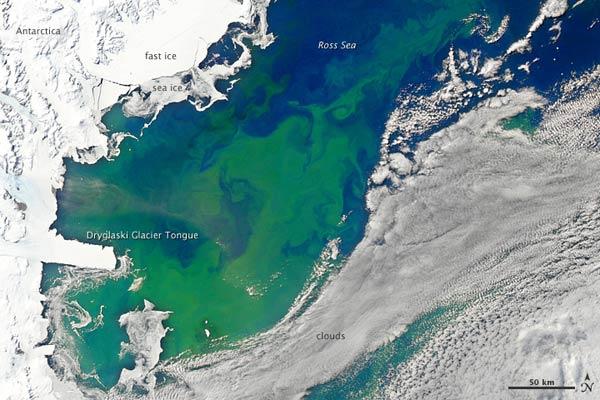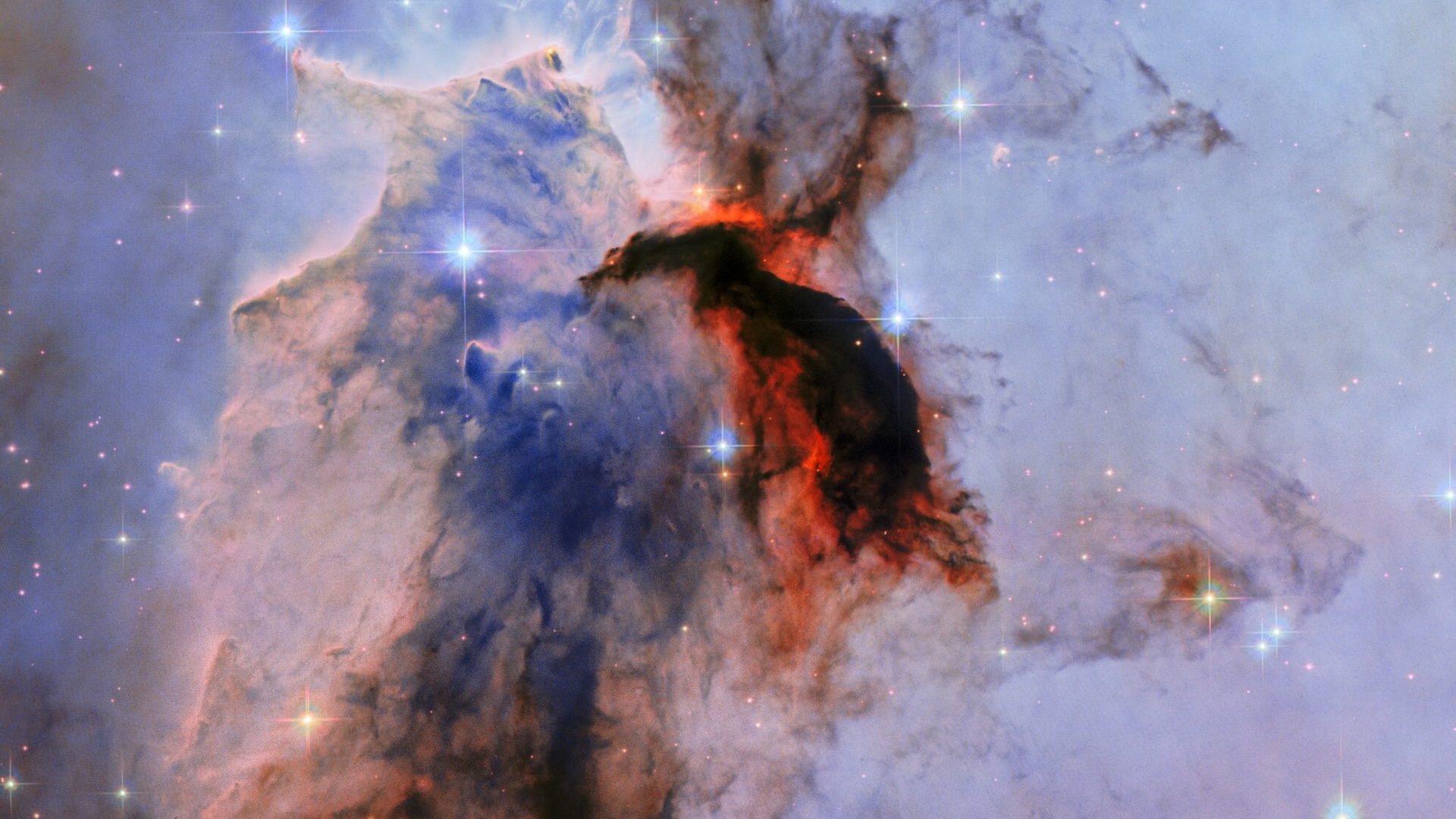
Antarctic Seas Burst to Life

Every spring and summer in the Southern Hemisphere, after the Sun has risen above the horizon and graces the skies of Antarctica 24 hours a day, the Ross Sea bursts with life.
Floating, microscopic plants, known as phytoplankton, soak up the sunlight and the nutrients stirring in the Southern Ocean and grow into prodigious blooms . Those blooms become a great banquet for krill, fish, penguins, whales, and other marine species who carve out a living in the cool waters of the far south.
NASA's Aqua satellite captured this image of a bloom in the Ross Sea on Jan. 22. Bright greens of plant-life have replaced the deep blues of open ocean water, according to a NASA statement.
The Ross Sea is a relatively shallow bay in the Antarctic coastline , due south of New Zealand.
As the spring weather thaws the sea ice around Antarctica, areas of open water surrounded by ice called polynyas open up on the continental shelf. In this open water, sunlight provides the fuel and various current systems provide nutrients from deeper waters to form blooms that can stretch 60 to 120 miles (100 to 200 kilometers).
These blooms are among the largest in extent and abundance in the world.
Scientists have hypothesized that the Modified Circumpolar Deep Water is the engine behind the blooms, stirring up just the right mix of trace metals and minerals from the deep to sustain plankton growth. This month, researchers aboard the U.S. icebreaking ship Nathaniel B. Palmer are cruising in the Ross Sea in search of the signatures of this current system.
Sign up for the Live Science daily newsletter now
Get the world’s most fascinating discoveries delivered straight to your inbox.











